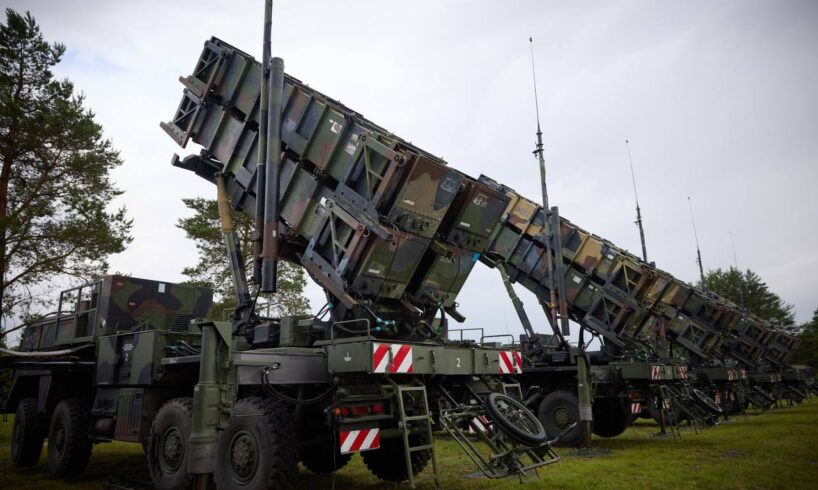
Germany and the United States will decide within days or weeks on sending two U.S.-made Patriot air defense systems to Kyiv, German Defence Minister Boris Pistorius announced on July 14 after discussions with U.S. Defense Secretary Pete Hegseth.
Germany has offered to acquire U.S. Patriot units specifically for transfer to Ukraine, which has recently endured some of the war’s most intense Russian attacks.
Speaking from Washington, Pistorius confirmed that working-level talks would continue to finalize agreement details, including the precise number of launchers and missiles, according to Reuters. With a deal secured, he added, the first Patriot unit could arrive in Ukraine within months. Pistorius declined to comment on whether their discussions extended to offensive weapons for Kyiv.
Germany has already donated three of its own Patriot units to Kyiv, retaining nine systems. This number significantly contrasts with the 36 Patriot batteries Germany operated during the height of the Cold War.
Patriot missiles — what they are and why everyone wants them
Amid escalating Russian aerial attacks on Ukraine, simmering tensions in the Middle East, and a Europe seeking to rearm in the face of an ever-more belligerent Kremlin, one piece of military kit in particular is currently in hot demand across the globe — Patriot PAC-3 interceptor missiles. The U.S.-made Patriot air defense system is one of the few in the world that defend against ballistic missiles, which Russia regularly launches against Ukraine, and which Israel and Iran traded salvos of las
Pistorius received a warm reception in Washington, reflecting Germany’s evolving stance as a substantial contributor to NATO’s largest military buildup since the Cold War. For decades, Germany had lagged in defense spending.
Now, as European officials express concern over potential future Russian aggression and anticipate a possible drawdown of U.S. forces, Germany has relaxed its constitutional debt brake. This move aims to meet NATO’s new core military spending target of 3.5% of national output by 2029, boosting German defense spending to 162 billion euros (approximately $189 billion USD) in 2029.
Pistorius also revealed that Berlin submitted a letter of request to Washington for the purchase of U.S. Typhon missile launchers. He characterized the Typhon system as a potential interim solution while European partners advance their own land-based long-range weapons development.
“Together with Great Britain and other partners, we are developing land-based long-range systems, but this will take 7 to 10 years,” Pistorius told reporters. “This is why we need a stop-gap solution.” The Typhon, capable of launching missiles with a range of approximately 2,000 km (1,243 miles), could bridge the gap until European ground-launched long-range weapons are ready, serving as an interim measure until the deployment of U.S. long-range missiles to Germany, currently scheduled from 2026.
Another central topic in Pistorius’ talks in Washington was an ongoing review of the U.S. global force posture. This review could result in troop reductions in Europe, where approximately 80,000 U.S. soldiers are stationed, with around 40,000 in Germany. European allies have consistently urged Washington to ensure any drawdown is coordinated to prevent capability gaps that might leave NATO members vulnerable to Russian aggression.
Minerals were all the talk at the largest Ukraine Recovery Conference
After two days of talks and panel discussions in Rome at the fourth Ukraine Recovery Conference (URC), there was one topic that stood out from the rest: critical minerals. During a packed workshop on July 11 with representatives from Ukraine’s Economy Ministry, minerals and financial sector, as well as investors, and the U.S. government agency the International Development Finance Corporation (DFC), the message was loud and clear — Ukraine’s minerals are going to bring a plethora of opportuniti





